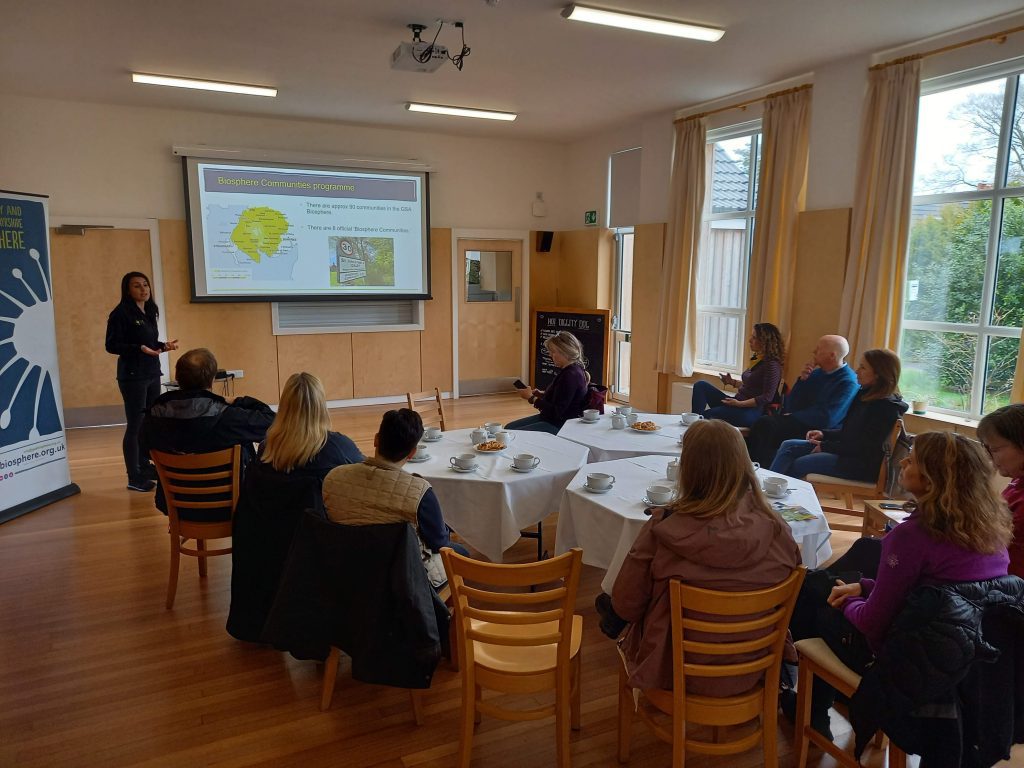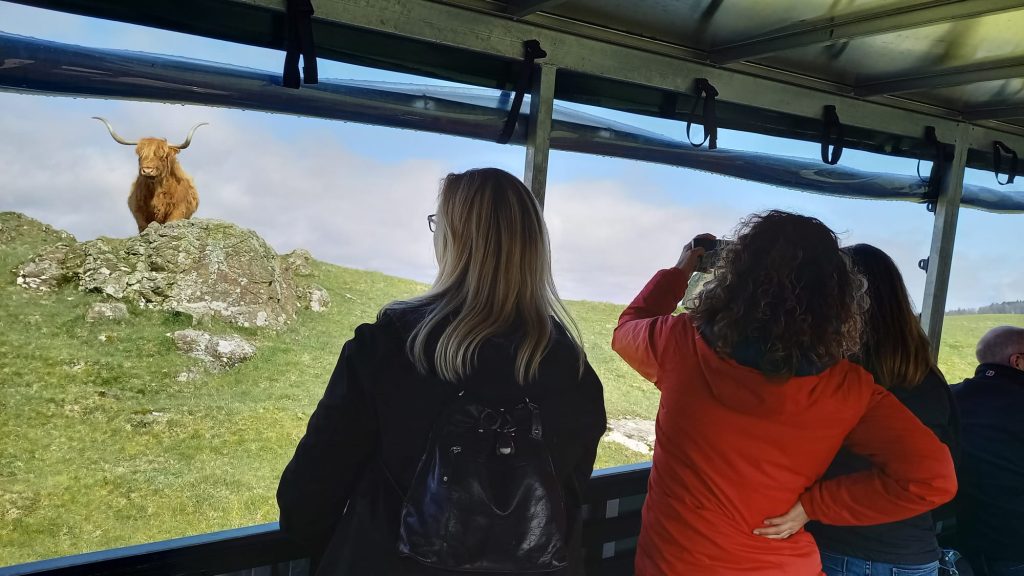The Galloway and Southern Ayrshire UNESCO Biosphere has welcomed a delegation from Sweden’s UNESCO Biosphere Reserves for a two-day learning journey, visiting sites and organisations that are driving sustainable development in southwest Scotland.
The network of UNESCO Biospheres currently numbers 738 in 134 countries around the world. Within their shared remit is international knowledge-exchange, building on the work each organisation undertakes in their own locality to embed sustainability in enterprise, leisure, tourism, and community life. In the ten years since Galloway and Southern Ayrshire was awarded its UNESCO designation, it has already engaged in partnership projects with several European Biospheres including in Germany, Finland, and the Basque region of Spain.

The two-day visit was the first by Swedish Biosphere Co-ordinators and began at the Glentrool Hive with the Glentrool and Bargrennan Community Trust, to talk about the Biosphere Communities scheme and the Biosphere Certification Mark scheme for business. This was followed by a drive up the GSA Biosphere’s western coast to Girvan, to visit the community garden and meet social enterprises Adventure Carrick and Biosphere Bikes. Down at New Luce the group took a tour at Kitchen Coos and Ewes, an opportunity to find out more about the visitor appeal of Scotland’s rural heritage and how some local farmers are successfully diversifying into agritourism. The second day of the trip included Cairnsmore of Fleet National Nature Reserve, a key area for habitat restoration in the GSA Biosphere, and a visit to Gatehouse of Fleet to speak to the Gatehouse Development Initiative about some of the volunteer-led projects that are helping people and nature to thrive.
Like the UK, Sweden has seven Biosphere Reserves, and as well as commonalities in landscape, climate and industry, share many of their principal challenges with southwest Scotland. All those present are currently engaged in conservation across protected areas, promoting nature-friendly farming, and working with the public and private sector towards carbon reduction goals.
Ed Forrest, Director of the GSA Biosphere, said: “This is the first time it’s been possible to arrange an international exchange since before the pandemic, so our Swedish colleagues were much anticipated guests! The two-day programme we put together gave equal weight to on-site experience and sit-down discussion so that every member of each Biosphere team could share their ideas. UNESCO Biospheres are uniquely placed to collaborate internationally on the issue of sustainable development, and reciprocal learning journeys such as this really demonstrate how Galloway and Southern Ayrshire is the place for innovation in partnership working.”
Johanna MacTaggart, National Coordinator of the Swedish MAB Programme, said: “Our visit to the Galloway & Southern Ayrshire Biosphere was very inspiring. The meetings with Biosphere entrepreneurs and communities gave good insight into how the organisation interacts with local stakeholders as well as the Biosphere’s contribution to local sustainable development. There are strong similarities to the work in Swedish Biospheres but also differences in approaches from which I see we can learn from each other. I am looking forward to continued collaboration with the GSA Biosphere and hope to welcome Scottish visitors to a Biosphere in Sweden soon.”
More information about the Galloway & Southern Ayrshire UNESCO Biosphere is available at www.gsabiosphere.org.uk, or contact the team via [email protected].






